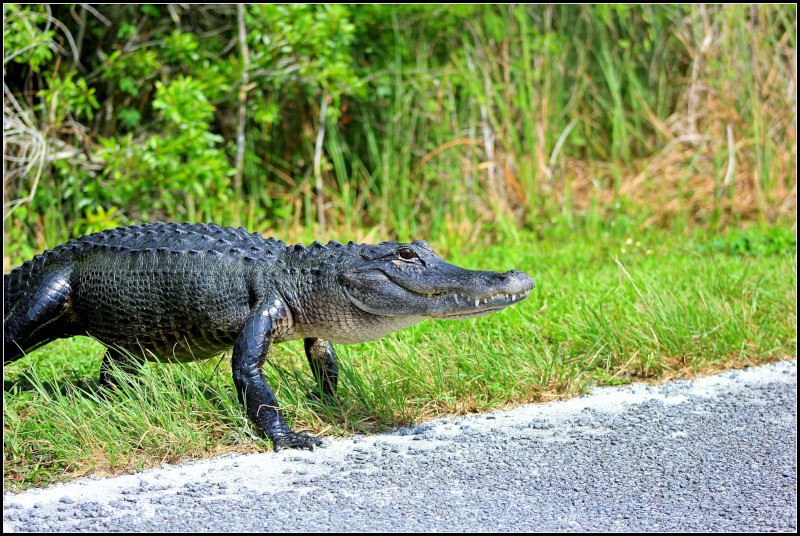
American Alligator Facts
- This remarkable product of evolution remains best known by the informative and descriptive common name of the American Alligator. Yet, it has a few other general titles, too. These include such simple terms as common alligator, and gator.
- Within the scientific community, however, it’s perhaps better known by its technical designation. As so often holds true, though, that’s something of a tongue-twister for the layperson. That’s because it holds the official epithet Alligator mississippiensis.
- The impressive creature received that moniker due to the efforts of François Marie Daudin. The noted French zoologist accomplished the first recognition of it as a separate and distinct species. He managed that scientifically noteworthy deed in 1802.
- This amazing reptile represents one of only two surviving members of its genus. It’s also the larger of the two. In the distant past, however, the world held several other species within this genus. One, extinct millions of years ago, reach 39 ft (11.9 m)!
- Considered endangered as recently as the 1960’s, the population of the awesome American Alligator recovered due to conservation efforts. Due to the result of those concerted efforts, the IUCN currently lists the animal as Least Concern on its Red List.
- The marvel of Nature nevertheless still faces multiple potential threats to its continued existence as a species. Like all forms of life on the earth today, most of those stem from the actions of man. They include the related perils of habitat loss and climate change.
Related Articles
American Alligator Physical Description
The breathtaking American Alligator certainly captures the attention of those who encounter it. This holds true both in reality and in culture. Unlike some creatures, though, this incredible creation of Nature merits appreciation both for its beauty and its physical size.
In terms of its physical nature, the intriguing Crocodilian follows a pattern of development similar to most others. That’s in the simple fact that it displays a certain amount of the physiological trait known as sexual dimorphism. In its case, this manifests in dimensions.
More precisely, males attain greater average measurements than their female counterparts. This trend extends to both length and weight. Although this gender-based difference presents as less extreme than in many of its relatives, it’s nonetheless still quite notable.
Males attain an average total length equaling about 11.2 ft (3.4 m). Weights for these same individuals measures a mean of 790 lb (360 kg). Exceptional examples exceed both these significantly, though. Some grow to as much as 15.1 ft (4.6 m) and 1,100 lb (500 kg).
Females, meanwhile, reach smaller dimensions in both respects. For this sex, mature individuals manage an average total length of roughly 8.5 ft (2.6 m). Their mass also remains less, typically averaging about 201 lb (91 kg). They’re clearly much slimmer than males.
Otherwise, however, the genders of the American Alligator present the same outward appearance to the observer. The upperside of the body generally displays a range of colors that include brown, gray, black, or olive. The underside, though, usually shows a cream color.
Like its many kindred around the world, its body has a covering of thick, sturdy scales. It’s also well known for its elongated snout. This contains 74 – 80 short yet powerful teeth. It also has relatively short legs. Its front legs develop five toes, but the rear one’s only have four.
- Kingdom: Animalia
- Phylum: Chordata
- Class: Reptilia
- Order: Crocodylia
- Family: Alligatoridae
- Genus: Alligator
- Species: A. mississippiensis
American Alligator Distribution, Habitat, and Ecology
The astounding American Alligator evolved as native to a relatively small expanse of the surface of the earth. Its own name provides information as to where that zone of habitation lies, though. As indicated, the animal is endemic to a small portion of North America.
Within the confines of that continent, however, it only appears naturally in a specific territorial range of the United States. There, it appears in the southeastern region. Its range extends from as far north as North Carolina to as far south as Texas and Oklahoma.
The impressive reptile displays a moderate degree of flexibility regarding its choice of habitat type. Due to this adaptability, it’s seen in a variety of localities and ecosystems. Yet, the wonder of Nature principally resides in streams, rivers, swamps, lakes, and ponds.
The greatest concentration of the animal occurs in Louisiana, followed by the Everglades, in Florida. Although they prefer freshwater, it’s sometimes spotted in brackish water. Amazingly, it’s also shown a willingness to live in the water hazards of golf courses!
As with all related creatures, the American Alligator evolved as a carnivore. It hunts both actively and as an ambush predator. It also feeds opportunistically and indiscriminately. Its diet ranges from small invertebrates to fish, birds frogs, and small mammals.
Breeding takes place in early spring, after which the female lays 20 – 50 eggs in a nest she constructed near the water. Incubation takes about 65 days, during which time the mother remains close by. After hatching, she carries them to the water in her jaws.
Species Sharing Its Range
Check out our other articles on 3 Surprising South American Moths, Eurasian Brown Bear, Victoria Falls, Deset Willow, Fire Salamander, Scarce Swallowtail, Philippine sailfin lizard, Weka
